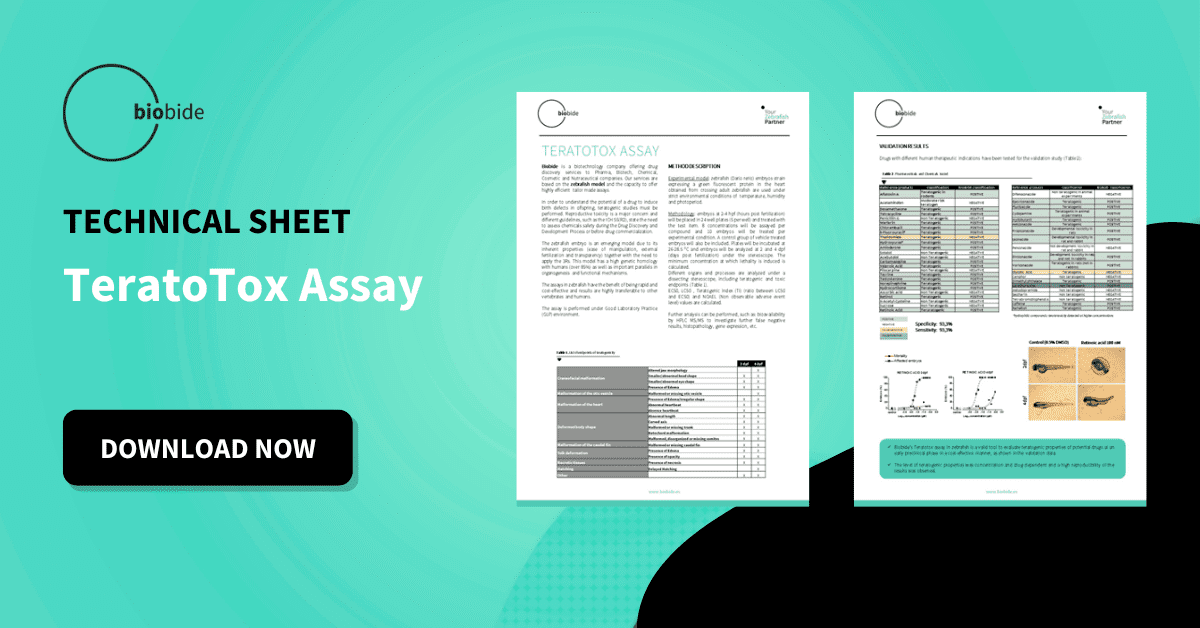Drug Discovery and pharmaceutical research is designed around gathering data for a full understanding of the toxicity, safety, and efficacy of the new potential treatment. Reproductive toxicology is a key component of that data, requiring relevant information on any harmful chemical substances that interfere or interact with the reproductive system of an organism.
Reproductive toxicology is a broad term that includes sexual functions and organs, fertility, development, and maturation.
As a general rule of thumb, reproductive toxicology includes any impact on an adult’s ability to become a parent or any effect a parent has on their offspring. The complex interactions between newly discovered molecules and the biological system often translate into a need for thorough testing in order to document how a parent and their offspring are affected.
There is also a distinction between drugs that affect the reproductive system as a part of their design – as is the case with hormonal contraceptives – and unintentional side effects. However, in both cases understanding reproductive toxicology is an important part of drug development.

What is Reproductive Toxicology?
As mentioned above, reproductive toxicology is a general term for how a new treatment or drug affects the reproductive system, including any intended outcomes and harmful side effects. The full reproductive system can be considered vague and as such is better broken down into whether parents or their offspring are impacted.
- Reproduction (Parents) – Substances that interfere or impact an organism’s ability to reproduce falls under the category of reproduction. The vast array of biological systems and sexual behaviors that can be affected include conception, gamete production, reduced fertility in offspring and more.
- Development (Offspring) – Substances that interfere or impact the development or maturation of an organism fall under development. Developmental toxicity can therefore be a result of either the parent’s exposure to a substance before conception or the offspring’s exposure to a substance during development.
Reproductive toxicology and the impact of a new drug on an organism’s development can manifest itself at nearly any stage of life, leading to issues with maturation, including mental and motor deficiencies or in extreme cases even death.
How to Test for Reproductive Toxicology
Testing for reproductive toxicology is an important part of Drug Discovery and early drug development. Looking into how a new treatment can impact multiple generations requires relevant and reliable data before moving on to clinical trials.
There are many tests and assays that screen for known toxins and harmful substances but as a new treatment moves forward there is a need to run experiments on living animal models. Relying on living organisms to look into reproductive toxicology allows scientists and researchers to understand how the entire biological system is affected by the new drug.
Experiments on animal models also aid in the development of dose-response relationships.
All the information collected from animal models and early screenings needs to be applicable to human structures and systems as well. With the right highly homologous animal model, finding comparable data for future human patients is a relevant process.
When animal models share pharmacokinetic profiles with humans, the data provides important information on how the body and the drug interact with each other.
 Alternative Models for Reproductive Toxicology
Alternative Models for Reproductive Toxicology
Preclinical studies rely on animal models to gather relevant and reliable data on newly discovered molecules and chemical compounds. Choosing the right model for the right test can be a sensitive subject that needs to weigh the ethical treatment of living animals with the needs for accurate data on toxicity, safety, and efficacy.
Without a proper understanding of how a new drug affects the biological system it will never pass regulations and be brought to market.
The use of mammals like rats and mice may result in highly relevant data but can also involve a lot of work for proper care as well as a slow regulatory process. However, the increasing concern for the ethical treatment of mammals used in scientific research can impact the choice of animal model.
Ensuring the proper care and housing for generations of mice can quickly add up and eat into budgets. With many new drugs finding harmful side effects early in Drug Discovery that prohibit further development, the seemingly wasted time and effort begins to compound.
Alternative animal models like Zebrafish are opening up new opportunities for fast-paced and cost effective research while ensuring the ethical treatment of the living organisms.
Zebrafish are an alternative animal model that offers many of the same benefits of mammals, sharing similar physiology and a common vertebrate evolutionary history. The small fish are also naturally well suited to pharmaceutical research – laying hundreds of eggs every week and developing transparent embryos that allow for ethical in vivo observations and testing.
With the complete Zebrafish genome mapped, there is a wealth of information on the homologous and comparable structures between the small fish and humans.
The long list of Zebrafish benefits has already caught the eyes of many pharmaceutical companies looking to balance reliable data with an affordable price point. There are many new assays like a recent test for predicting the teratogenic potential of chemicals that have found success not only in preclinical studies but also in early Drug Discovery through the use of Zebrafish.
The growth in popularity for Zebrafish as an alternative animal model has also led to many government organizations, including the FDA and EMEA, to develop protocols for processing data on toxicity, safety, and efficacy gathered from Zebrafish.




